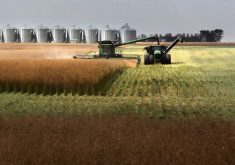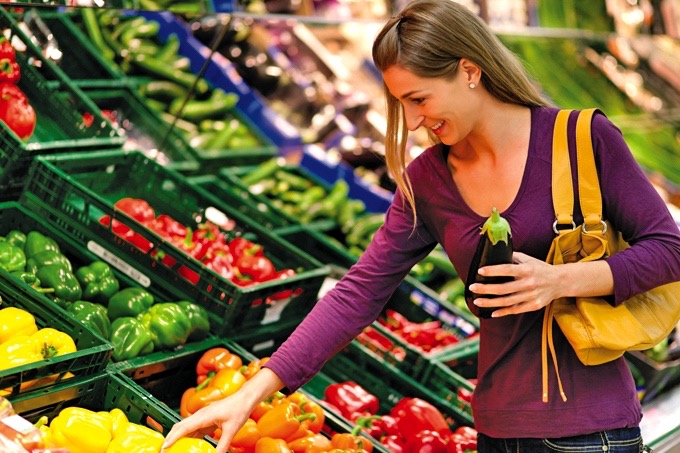Since the year 2022 is here, it is time to reflect on what has happened this past year and anticipate what lies ahead.
Food inflation obviously affected most food categories this year, which is why the last 12 months have been challenging for Canadians both at the grocery store and at restaurants. Canada’s Food Price Report 2022 was released recently by Dalhousie University, the University of Guelph, the University of Saskatchewan, and the University of British Columbia, forecasting that the average Canadian family could spend up to $966 more on groceries in 2022, compared to this year.
A recent report by the Agri-Food Analytics Lab at Dalhousie University, in partnership with Caddle, looked at what Canadians intend to do in the new year, with food and with other aspects of their lives related to food.
Almost 10,000 Canadians were surveyed on what they expect in both food retail and service over the coming 12 months. The report looked at New Year’s Resolutions and how Canadians intend to cope with higher food prices, or if they plan to do different things with food in their lives. The survey first asked Canadians how they think food prices are increasing compared to their household income. A total of 89.8 per cent of respondents stated that food prices are increasing at a faster pace than their income. That is a high percentage indeed.
In three years, this is the highest percentage of Canadians believing food prices are rising faster than their income. In Canada’s Food Price Report 2022, regarding the forecast which expects food prices to go up by as much as seven per cent in the new year, most Canadians believe the forecast is too modest. A total of 60.2 per cent of Canadians expect food prices to go even higher. For the new year, some food categories are more concerning than others for Canadians.
Unsurprisingly, meat prices are a great source of concern for Canadian shoppers. Two years ago, when a similar survey was conducted, vegetables were the one category most Canadians were concerned about. For 2022, while a total of 49.3 per cent of Canadians are concerned about meat prices, 22.8 per cent are concerned about vegetables. Fruits are at 12.8 per cent, and dairy products are at 6.4 per cent. Fish and seafood and bakery products are categories for which Canadians are the least concerned.
With food prices there is one funny thing happening. These results are interesting since perceptions don’t reflect what is really happening in the grocery stores. For example, even if produce prices this year barely moved, Canadians are still concerned about fluctuating prices for vegetables and fruits, as they were two years ago when prices did go up. The infamous “cauliflower crisis” is something many remember. When consumers are spooked, it makes a mark, mentally. Many still believe a head of cauliflower is $8, when most cauliflower this year was sold under $2 a head. Consumers should remember that food prices change almost daily.
Based on the survey, 2022 will bring some changes. For the new year, a total of 63 per cent of Canadians intend to alter food habits in some way. The most popular decision for 2022 is to use coupons more often. A total of 52.8 per cent of Canadians intend to use coupons more often. Given that menu prices will spike, not eating out as much is the second most popular habit change on the survey. A total of 51.7 per cent of Canadians intend to avoid restaurants in the new year. Flyers are likely to become more popular as well, as a total of 45.5 per cent of shoppers intend to consult them more often.
Since the start of the pandemic, it has been reported several times that shoppers are visiting or even switching primary grocery stores, about 26 per cent of us. That trend is likely going to continue in 2022, since 31.9 per cent are thinking of visiting different grocery stores.
And finally, the survey asked what Canadians intend to do more in the new year. The top resolution for 2022 is to reduce food waste and eat more vegetables. In 2020, the last time we conducted a similar survey which also was pre-pandemic, results were similar, as reducing food waste and eating more fruit and vegetables were top choices then. Cook more often is third on the list of food resolutions for 2022. Changing diets and eating more leftovers also received strong support, as they did in 2020.
Items which are new to the list, compared to our last pre-pandemic survey conducted in 2020, are changing the way meals are managed (15.0 per cent), eating more fish and seafood (11.6 per cent), gardening (9.3 per cent), ordering food online (7.1 per cent), and order more meal kits (4.7 per cent). These new top resolutions do somewhat reflect how the food landscape has changed because of the pandemic.
Since 2022 will be the International Year of Aquaculture and Artisan Fisheries, seeing more Canadians wanting to eat more fish and seafood is fitting with the times.
Happy New Year!
Sylvain Charlebois is professor of food distribution and policy at Dalhousie University and senior director of the Agri-Food Analytics Lab.















